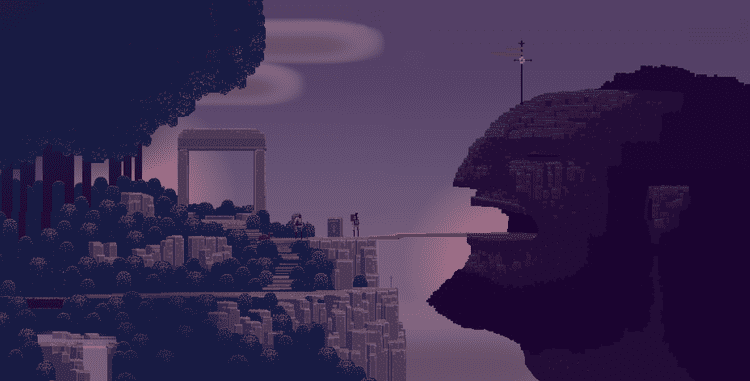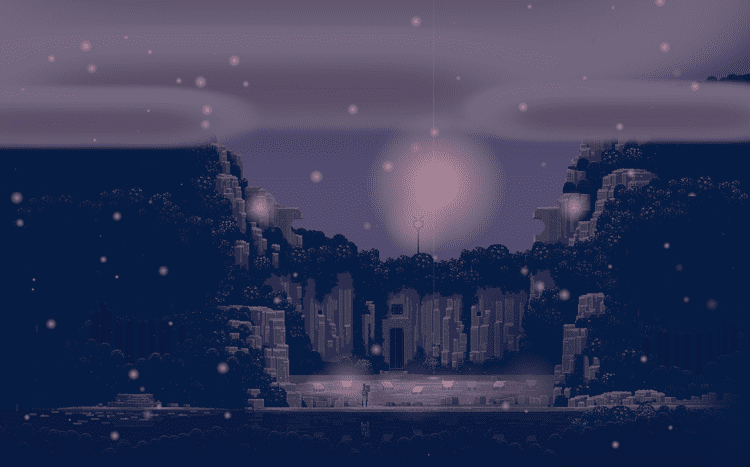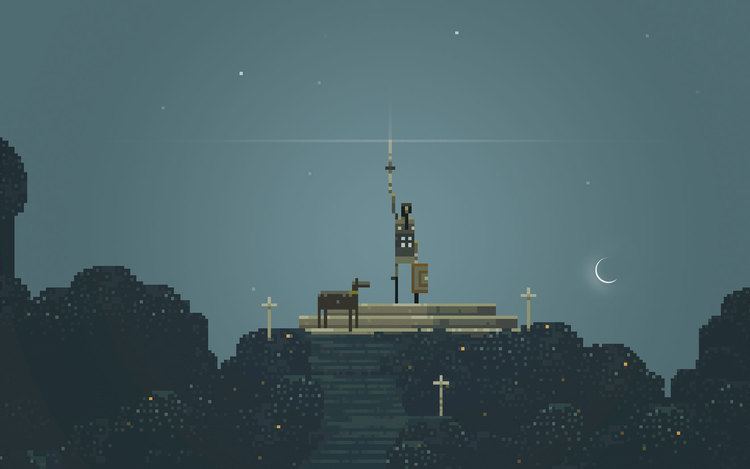 | ||
The megalith 12 genre high fantasy adventure sword and sorcery thriller
Sword and sorcery (S&S) is a subgenre of fantasy generally characterized by sword-wielding heroes engaged in exciting and violent conflicts. An element of romance is often present, as is an element of magic and the supernatural. Unlike works of high fantasy, the tales, though dramatic, focus mainly on personal battles rather than world-endangering matters. Sword and sorcery commonly overlaps with heroic fantasy.
Contents
- The megalith 12 genre high fantasy adventure sword and sorcery thriller
- Origin
- Seminal works
- Revival
- Women creators and characters
- References

A film genre tangentially related to sword and sorcery, at least in name, is sword-and-sandal, though its subjects are generally oriented to biblical times and early history, instead of fantasy. Not to be confused with cloak and dagger or cloak and sword, which are alternate genres.

Origin

The term "sword and sorcery" was coined in 1961 by the British author Michael Moorcock, who published a letter in the fanzine Amra, demanding a name for the sort of fantasy-adventure story written by Robert E. Howard. He had initially proposed the term "epic fantasy". However, the celebrated American sword-and-sorcery author Fritz Leiber replied in the journal Ancalagon (6 April 1961) suggesting, "sword-and-sorcery as a good popular catchphrase for the field". He expanded on this in the July 1961 issue of Amra, commenting:

I feel more certain than ever that this field should be called the sword-and-sorcery story. This accurately describes the points of culture-level and supernatural element and also immediately distinguishes it from the cloak-and-sword (historical adventure) story—and (quite incidentally) from the cloak-and-dagger (international espionage) story too!
—Fritz Leiber, Amra, July 1961Though not explicitly mentioned in Leiber's letter, the originally Italian film genre known as "sword and sandal", depicting heroic adventures in settings derived from the Bible or Greek mythology, was at the peak of its popularity in the US at the time when the letter was written.
Since its inception, many attempts have been made to redefine precisely what "sword and sorcery" is. Although many have debated the finer points, the consensus characterizes it by a strong bias toward fast-paced, action-rich tales set within a quasi-mythical or fantastical framework. Unlike high fantasy, the stakes in sword and sorcery tend to be personal, the danger confined to the moment of telling. Settings are typically exotic, and protagonists often morally compromised.
Many sword and sorcery tales have been turned into a lengthy series of adventures. Their lower stakes and less-than world-threatening dangers make this more plausible than a repetition of the perils of epic fantasy. So too does the nature of the heroes; most sword-and-sorcery protagonists, travellers by nature, find peace after adventure deathly dull. At one extreme, the heroes of E. R. Eddison's The Worm Ouroboros grieve for the end of the war and that they have no more foes equal to those they defeated; in answer to their prayers, the gods restore the enemy city so that they can fight the same war over again.
Seminal works
The genre has been defined, strongly, by the work of Robert E. Howard, particularly his tales of Conan the Barbarian and Kull of Atlantis, mostly in Weird Tales from 1932 and 1929 respectively.
Other books and series that define the genre of sword-and-sorcery include:
Other pulp fantasy fiction—such as Edgar Rice Burroughs' Barsoom series and Leigh Brackett's Sea Kings of Mars — have a similar feel to sword and sorcery, but, because alien science replaces the supernatural, it is usually described as planetary romance or sword and planet, and considered to fall more in the area of science fiction. Despite this, planetary romance is closely aligned with sword and sorcery, and the work of Burroughs, Brackett, and others in the former field have been significant in creating and spreading S&S proper. Sword and sorcery itself has often blurred the lines between fantasy and science fiction, drawing elements from both like the "weird fiction" it sprang from.
Revival
From the 1960s up till the 1980s, under the guiding force of Lin Carter, a select group of writers formed the Swordsmen and Sorcerers' Guild of America (SAGA) to promote and enlarge the sword and sorcery genre. From 1973 to 1981, five anthologies featuring short works by SAGA members were published. Edited by Carter, these were collectively known as Flashing Swords!. Because of these and other anthologies, such as the Ballantine Adult Fantasy series, his own fiction, and his criticism, Carter is considered one of the most important popularizers of genre fantasy in general, and S&S in particular.
Another notable sword and sorcery anthology series that ran from 1977 through 1979 was called "Swords Against Darkness" (Zebra Books), edited by Andrew J. Offutt. This series ran to five volumes and featured stories by such authors as Poul Anderson, David Drake, Ramsey Campbell, Andre Norton, and Manly Wade Wellman.
Despite such authors' best efforts, sword and sorcery has more colloquially come to be known as a catch-all phrase for low grade, derivative fantasy. During the 1980s, influenced by the success of the 1982 feature film Conan the Barbarian, many cheaply made fantasy films were released in a subgenera that would be called "Sword & Sorcery". The term is sometimes used in a derogatory manner by writers and readers of the fantasy genre.
After the boom of the early 1980s, sword and sorcery once again dropped out of favor, with epic fantasy largely taking its place in the fantasy genre. However, there was another resurgence in sword and sorcery at the end of the 20th century. Sometimes called the "new" or "literary" sword and sorcery, this development places emphasis on literary technique, and draws from epic fantasy and other genres to broaden the typical scope of S&S. Stories may feature the wide-ranging struggles national or world-spanning concerns common to high fantasy, but told from the point of view of characters more common to S&S, and with the sense of adventure common to the latter. Writers associated with this include Steven Erikson, Joe Abercrombie, and Scott Lynch, magazines such as Black Gate and the ezines Flashing Swords (not to be confused with the Lin Carter anthologies), and Beneath Ceaseless Skies publish short fiction in the style. These authors and editors are attempting to return the genre to the status it enjoyed during the pulp era of the twenties and thirties.
Women creators and characters
Despite the importance of C. L. Moore, Leigh Brackett, Andre Norton, and other female authors, as well as Moore's early heroine, sword and sorcery has been characterized as having a strongly masculine bias. Female characters were generally distressed damsels to be rescued or protected, or otherwise served as an inducement or reward for a male hero's adventures. Women who had adventures of their own often did so to counter the threat of rape, or to gain revenge for same. Marion Zimmer Bradley's Sword and Sorceress anthology series (1984 onwards) attempted the reverse. Bradley encouraged female writers and protagonists. The stories feature skillful swordswomen and powerful sorceresses, working from a variety of motives. The series was immensely popular and Bradley was editing her final volume at the time of her death, though the series continued under other editors. Jessica Amanda Salmonson similarly sought to broaden the range of roles for female characters in S&S through both her own stories and in editing the World Fantasy Award-winning Amazons (1979) and Amazons II (1982) anthologies; both drew on real and folkloric women warriors, often from areas outside of Europe. Today, active female characters who participate equally with the male heroes in the stories are a regular feature in modern sword and sorcery stories.
Early sword and sorcery writer Robert E. Howard had feminist views despite his era and location, which he espoused in both personal and professional life. Howard wrote to his friends and associates defending the achievements and capabilities of women. Strong female characters in Howard's works of fiction include the protofeminist Dark Agnes de Chastillon (first appearing in "Sword Woman", circa 1932–34), the early modern pirate Helen Tavrel ("The Isle of Pirates' Doom", 1928), as well as two pirates and Conan the Barbarian supporting characters, Bêlit ("Queen of the Black Coast", 1934), and Valeria of the Red Brotherhood ("Red Nails", 1936).
Introduced as a minor character in a non-fantasy historical story by Howard, "The Shadow of the Vulture", Red Sonya of Rogatino would later inspire a fantasy heroine named Red Sonja, who first appeared in the comic book series Conan the Barbarian written by Roy Thomas and illustrated by Barry Windsor-Smith. Red Sonja received her own comic book title and eventually a series of novels by David C. Smith and Richard L. Tierney, as well as Richard Fleischer's unsuccessful film adaptation in 1985.
